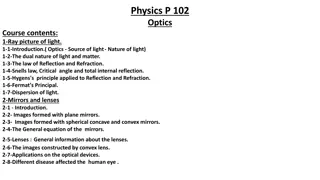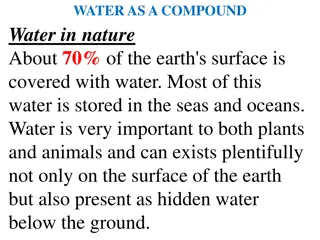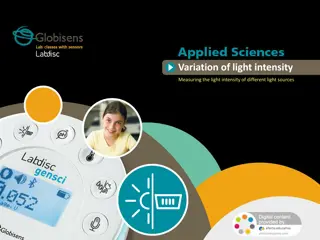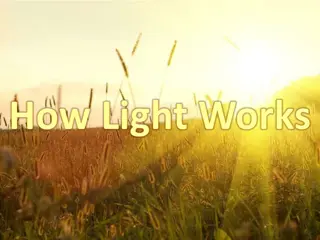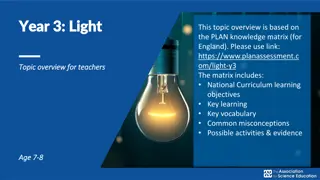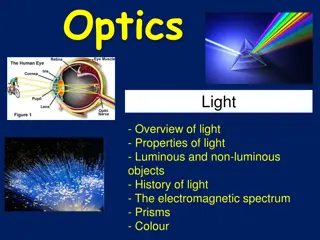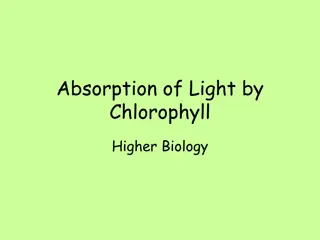Understanding Light: Sources and Properties
Light is a vital form of energy that enables vision and is emitted or reflected by various sources. Learn about natural sources like the sun, moon, fire, lightning, and luminous animals, as well as artificial sources powered by electricity. Discover how light waves travel, illuminating our world and aiding visibility both naturally and artificially.
Download Presentation

Please find below an Image/Link to download the presentation.
The content on the website is provided AS IS for your information and personal use only. It may not be sold, licensed, or shared on other websites without obtaining consent from the author. Download presentation by click this link. If you encounter any issues during the download, it is possible that the publisher has removed the file from their server.
E N D
Presentation Transcript
What is light? Light is a form of energy that travels in waves. Light waves enables us to see objects. Some objects emit light and some reflect light.
The sun The sun is our biggest natural light source. When the sun rises at dawn, daylight breaks upon the Earth.
Light waves Light waves travel in straight lines. Sometimes we can see the sun s rays beaming through the clouds
The moon The moon often appears bright in the night sky but it does not generate its own light. The light shining from the moon is a reflection of the sun s rays.
Natural light Natural light is also emitted from fire. Before we had electricity people used fire and candles to light their homes in the evening time.
Lightning Lightning during a thunderstorm is also a natural light source.
Light in insects Some animals such as fireflies and glow-worms generate and emit their own light. These are called luminous.
Light in fish Lantern fish are also luminous.
Artificial light As well as natural light sources we also have artificial light sources. They are usually powered by electricity.
Electricity Nowadays we use electric light bulbs to provide light indoors.
Street lights Across the globe in villages, towns and cities, we use street lights to illuminate the streets at night time.
Flood lights We use flood lights to enable us to play sports and do outdoor activities in the evening time. This is very useful during the winter season.
Screen lights Other artificial light sources include mobile phone and laptop screens.
Standby functions When some household appliances are left on standby they emit a tiny light
Event lighting Artificial lighting can be extremely effective when it comes to lighting big outdoor events.
Mood lighting It can also be very effective in the home, creating a certain mood or feel.
Illustrations Shutterstock




